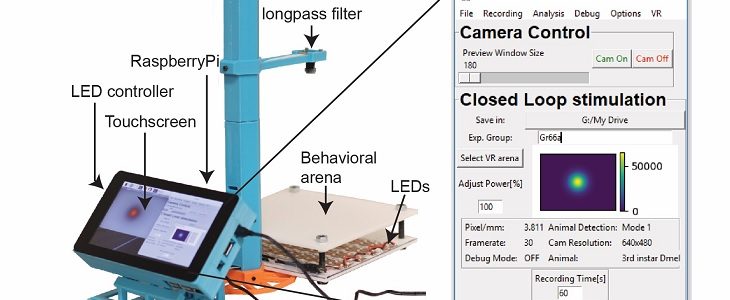PiVR stands for Raspberry Pi Virtual Reality system. It’s an open-source design published by David Tadres and Matthieu Louis that allows dynamic closed-loop experiments to study unrestrained optogenetic stimulation of neural functions in small creatures.
The device tracks a small creature at 50 Hz, and generates light stimulation patterns based on the position of the creature. It consists primarily of an RPi3 attached to a touchscreen, camera and LED projection system. The entire setup costs just $415, or if you make 7 setups the price dips down to $340 as beautifully detailed in the PiVR Bill of Materials.
The project’s website pivr.org has amazingly detailed instructions on how to build the device, with beautiful pictures at each step. The Bill of Materials is thorough and includes hyperlinks to all products, and there is even a step-by step experimental guide.
In a move I don’t think we’ve ever seen before, pivr.org provides an entire section detailing how each part of the PiVR code works, again with detailed pictures to walk you through each part of the algorithm. It’s really amazing, and even if you have no need of this particular scientific setup, it’s worth browsing through just to see how approachable a project like this can be made.
This has to be the best documented most accessible project we have ever seen. There are additional software manuals, detailed explanations of the PiVR output format, a github for all the code, PCB designs and 3d printer files, and an explanation and application example to Drosophila larvae laid out in both the paper and as a thread on twitter.
